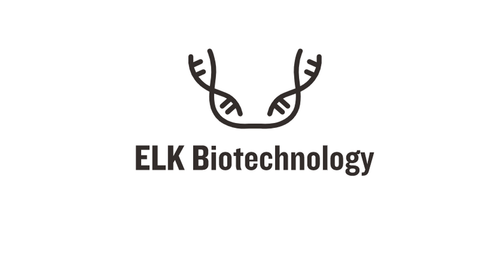Product Description
CB1 Antibody (Center) [APG02451G] | Leading Biology
Product Category: Polyclonal Antibodies
Host: Rabbit
Species Reactivity: H
Specificity: This CB1 antibody is generated from rabbits immunized with a KLH conjugated synthetic peptide between 161-187 amino acids of human CB1.
Cellular Localisation: Cell membrane; Multi-pass membrane protein. Membrane raft. Mitochondrion outer membrane {ECO:0000250|UniProtKB:P47746}. Cell projection, axon {ECO:0000250|UniProtKB:P20272}. Cell junction, synapse, presynapse {ECO:0000250|UniProtKB:P20272}. Note=Unexpectedly, in the mitochondria, the C-terminus is located in the mitochondrial intermembrane space, a compartment topologically considered as extracellular. In canonical seven-transmembrane G-protein coupled receptors, the C-terminus is cytosolic (By similarity) . Found on presynaptic axon terminals in some GABAergic neurons in the somatosensory cortex (By similarity) {ECO:0000250|UniProtKB:P20272, ECO:0000250|UniProtKB:P47746}
Molecular Weight: 52858
Clone: Polyclonal
Gene Name: CNR1
Gene ID: 1268
Function: G-protein coupled receptor for endogenous cannabinoids (eCBs), including N-arachidonoylethanolamide (also called anandamide or AEA) and 2-arachidonoylglycerol (2-AG), as well as phytocannabinoids, such as delta (9) -tetrahydrocannabinol (THC) (PubMed:15620723, PubMed:27768894, PubMed:27851727) . Mediates many cannabinoid-induced effects, acting, among others, on food intake, memory loss, gastrointestinal motility, catalepsy, ambulatory activity, anxiety, chronic pain. Signaling typically involves reduction in cyclic AMP (PubMed:1718258, PubMed:21895628, PubMed:27768894) . In the hypothalamus, may have a dual effect on mitochondrial respiration depending upon the agonist dose and possibly upon the cell type. Increases respiration at low doses, while decreases respiration at high doses. At high doses, CNR1 signal transduction involves G-protein alpha-i protein activation and subsequent inhibition of mitochondrial soluble adenylate cyclase, decrease in cyclic AMP concentration, inhibition of protein kinase A (PKA) -dependent phosphorylation of specific subunits of the mitochondrial electron transport system, including NDUFS2. In the hypothalamus, inhibits leptin-induced reactive oxygen species (ROS) formation and mediates cannabinoid-induced increase in SREBF1 and FASN gene expression. In response to cannabinoids, drives the release of orexigenic beta-endorphin, but not that of melanocyte-stimulating hormone alpha/alpha-MSH, from hypothalamic POMC neurons, hence promoting food intake. In the hippocampus, regulates cellular respiration and energy production in response to cannabinoids. Involved in cannabinoid-dependent depolarization-induced suppression of inhibition (DSI), a process in which depolarization of CA1 postsynaptic pyramidal neurons mobilizes eCBs, which retrogradely activate presynaptic CB1 receptors, transiently decreasing GABAergic inhibitory neurotransmission. Also reduces excitatory synaptic transmission (By similarity) . In superior cervical ganglions and cerebral vascular smooth muscle cells, inhibits voltage-gated Ca (2+) channels in a constitutive, as well as agonist- dependent manner (PubMed:17895407) . In cerebral vascular smooth muscle cells, cannabinoid-induced inhibition of voltage-gated Ca (2+) channels leads to vasodilation and decreased vascular tone (By similarity) . Induces leptin production in adipocytes and reduces LRP2-mediated leptin clearance in the kidney, hence participating in hyperleptinemia. In adipose tissue, CNR1 signaling leads to increased expression of SREBF1, ACACA and FASN genes (By similarity) . In the liver, activation by endocannabinoids leads to increased de novo lipogenesis and reduced fatty acid catabolism, associated with increased expression of SREBF1/SREBP-1, GCK, ACACA, ACACB and FASN genes. May also affect de novo cholesterol synthesis and HDL-cholesteryl ether uptake. Peripherally modulates energy metabolism (By similarity) . In high carbohydrate diet-induced obesity, may decrease the expression of mitochondrial dihydrolipoyl dehydrogenase/DLD in striated muscles, as well as that of selected glucose/ pyruvate metabolic enzymes, hence affecting energy expenditure through mitochondrial metabolism (By similarity) . In response to cannabinoid anandamide, elicits a proinflammatory response in macrophages, which involves NLRP3 inflammasome activation and IL1B and IL18 secretion (By similarity) . In macrophages infiltrating pancreatic islets, this process may participate in the progression of type-2 diabetes and associated loss of pancreatic beta-cells (PubMed:23955712) .
Summary: Tissue Location: Widely expressed, with highest levels in fetal and adult brain. Expression levels of isoform 2 and isoform 3 are much lower than those of isoform 1.
Form: Purified polyclonal antibody supplied in PBS with 0.09% (W/V) sodium azide. This antibody is purified through a protein A column, followed by peptide affinity purification.
Storage: Maintain refrigerated at 2-8°C for up to 2 weeks. For long term storage store at -20°C in small aliquots to prevent freeze-thaw cycles.
Application: WB
Dilution: WB--1:1000
Synonyms: Cannabinoid receptor 1, CB-R, CB1, CANN6, CNR1, CNR
 Euro
Euro
 USD
USD
 British Pound
British Pound
 NULL
NULL

![CB1 Antibody (Center) [APG02451G] CB1 Antibody (Center) [APG02451G]](https://cdn11.bigcommerce.com/s-452hpg8iuh/images/stencil/1280x1280/products/866378/1158445/logo__92149.1659788186__77573.1659863070.png?c=2)
![CB1 Antibody (Center) [APG02451G] CB1 Antibody (Center) [APG02451G]](https://cdn11.bigcommerce.com/s-452hpg8iuh/images/stencil/100x100/products/866378/1158445/logo__92149.1659788186__77573.1659863070.png?c=2)
![CB1 Antibody (Center) [APG02451G] CB1 Antibody (Center) [APG02451G]](https://cdn11.bigcommerce.com/s-452hpg8iuh/images/stencil/500x659/products/866378/1158445/logo__92149.1659788186__77573.1659863070.png?c=2)








